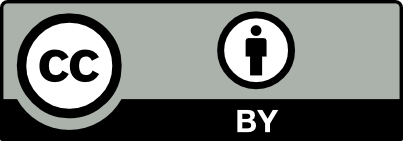[Dynamo anisotrope à trois corps : le rotor, l’entrefer et le stator]
Suite au succès de la dynamo expérimentale Fury [1], nous étudions (i) la possibilité d’une nouvelle expérience avec la même géométrie et la même conductivité électrique anisotrope, mais avec un entrefer de galinstan entre le rotor et le stator plus large que dans Fury, afin de permettre une dynamique plus riche via les forces de Lorentz. Bien sûr, pour ce faire, nous devons d’abord être en mesure de démarrer la dynamo avec un large entrefer, ce qui constitue le premier objectif de cette étude. Le deuxième objectif (ii) est de concevoir une expérience de dynamo miniature, plus petite que Fury, et avec un entrefer étroit, comparable à celui de Fury. L’utilisation cette fois d’une perméabilité magnétique anisotrope au lieu d’une conductivité électrique anisotrope est la solution la plus appropriée. La théorie montre que sans entrefer, l’utilisation de l’une plutôt que l’autre ne change pas le seuil de la dynamo, et seul le sens de rotation du rotor doit être inversé [2]. Avec un entrefer rempli de galinstan, même très étroit et contrairement à Fury dont le rotor et le stator étaient principalement constitués de cuivre, ici l’utilisation de fer entraîne un saut significatif de perméabilité magnétique avec le galinstan, ce qui pourrait être préjudiciable à la dynamo. Pour étudier ces deux questions liées (i) à l’épaisseur de l’entrefer, et (ii) aux propriétés électromagnétiques du matériau remplissant l’entrefer par rapport à celles du rotor et du stator, nous devons résoudre le problème de la dynamo anisotrope à trois corps : le rotor, l’entrefer et le stator.
Following the success of the experimental Fury dynamo [1], we are studying (i) the possibility of a new experiment with the same geometry and the same anisotropic electrical conductivity, but with a wider galinstan gap between the rotor and the stator than in Fury, in order to allow richer dynamics via Lorentz forces. Of course, to do this, we must first be able to start the dynamo with a large gap, which is the first objective of this study. The second objective (ii) is to design a miniature dynamo experiment, smaller than Fury, and with a narrow gap comparable to that of Fury. The use this time of anisotropic magnetic permeability instead of anisotropic electrical conductivity is the most appropriate solution. Theory shows that without a gap, using one rather than the other does not change the threshold of the dynamo, and only the direction of rotation of the rotor has to be reversed [2]. With a gap filled with galinstan, even a very narrow one, and unlike Fury whose rotor and stator were mainly made of copper, here the use of iron leads to a significant jump in magnetic permeability with galinstan, which could be detrimental to the dynamo. In order to study these two issues relating to (i) the thickness of the gap, and (ii) the electromagnetic properties of the material filling the gap compared with those of the rotor and stator, we need to solve the problem of the three-body anisotropic dynamo: the rotor, the gap and the stator.
Révisé le :
Accepté le :
Publié le :
Mots-clés : Effet dynamo, Propriétés électromagnétiques anisotropes, Dynamo expérimentale
Franck Plunian 1 ; Paul Gomez 2 ; Thierry Alboussière 2
 CC-BY 4.0
CC-BY 4.0
@article{CRPHYS_2025__26_G1_295_0,
author = {Franck Plunian and Paul Gomez and Thierry Alboussi\`ere},
title = {Three-body anisotropic dynamo: the rotor, the gap and the stator},
journal = {Comptes Rendus. Physique},
pages = {295--315},
publisher = {Acad\'emie des sciences, Paris},
volume = {26},
year = {2025},
doi = {10.5802/crphys.245},
language = {en},
}
TY - JOUR AU - Franck Plunian AU - Paul Gomez AU - Thierry Alboussière TI - Three-body anisotropic dynamo: the rotor, the gap and the stator JO - Comptes Rendus. Physique PY - 2025 SP - 295 EP - 315 VL - 26 PB - Académie des sciences, Paris DO - 10.5802/crphys.245 LA - en ID - CRPHYS_2025__26_G1_295_0 ER -
Franck Plunian; Paul Gomez; Thierry Alboussière. Three-body anisotropic dynamo: the rotor, the gap and the stator. Comptes Rendus. Physique, Volume 26 (2025), pp. 295-315. doi : 10.5802/crphys.245. https://comptes-rendus.academie-sciences.fr/physique/articles/10.5802/crphys.245/
[1] Fury: an experimental dynamo with anisotropic electrical conductivity, Proc. R. Soc. Lond. A, Volume 478 (2022), 20220374 | DOI
[2] Axisymmetric dynamo action produced by differential rotation, with anisotropic electrical conductivity and anisotropic magnetic permeability, J. Plasma Phys., Volume 87 (2021) no. 1, 905870110 | DOI
[3] et al. Magnetic field saturation in the Riga dynamo experiment, Phys. Rev. Lett., Volume 86 (2001), pp. 3024-3027 | DOI
[4] Experimental demonstration of a homogeneous two-scale dynamo, Phys. Fluids, Volume 13 (2001) no. 3, pp. 561-564 | DOI
[5] et al. Generation of a magnetic field by dynamo action in a turbulent flow of liquid sodium, Phys. Rev. Lett., Volume 98 (2007), 044502 | DOI
[6] et al. Chaotic dynamos generated by a turbulent flow of liquid sodium, Phys. Rev. Lett., Volume 101 (2008), 074502 | DOI
[7] Dynamo action produced by an anisotropic rotor immersed in an electrically conducting medium at rest, Phys. Rev. Fluids, Volume 8 (2023), 113702 | DOI
[8] Magnetic dynamos in the lab, Phys. Today, Volume 64 (2011) no. 7, pp. 40-45 | DOI
[9] Towards a precession driven dynamo experiment, Magnetohydrodynamics, Volume 51 (2015) no. 2, pp. 275-284 | DOI
[10] A simple dynamo caused by conductivity variations, Geophys. Astrophys. Fluid Dyn., Volume 64 (1992) no. 1–4, pp. 135-144 | DOI
[11] Dynamo action due to spatially dependent magnetic permeability, Europhys. Lett., Volume 97 (2012) no. 6, 69001 | DOI
[12] Spatial variations of magnetic permeability as a source of dynamo action, J. Fluid Mech., Volume 727 (2013), pp. 161-190 | DOI
[13] Fluctuations of electrical conductivity: a new source for astrophysical magnetic fields, Phys. Rev. Lett., Volume 116 (2016), 161102 | DOI
[14] Enhanced dynamo growth in nonhomogeneous conducting fluids, Phys. Rev. E, Volume 104 (2021), 015110 | DOI
[15] Magnetic field generation in an anisotropically conducting fluid, Geophys. Astrophys. Fluid Dyn., Volume 28 (1984) no. 1, pp. 77-88 | DOI
[16] Axisymmetric dynamo action is possible with anisotropic conductivity, Phys. Rev. Res., Volume 2 (2020), 013321 | DOI
[17] Fast and Furious dynamo action in the anisotropic dynamo, J. Fluid Dyn., Volume 87 (2022), A66 | DOI
[18] Dynamo action in sliding plates of anisotropic electrical conductivity, Phys. Rev. E, Volume 101 (2020), 033107 | DOI
[19] Growth rate degeneracies in kinematic dynamos, Phys. Rev. E, Volume 88 (2013), 031001 | DOI
[20] Introduction to Magnetism and Magnetic materials, Springer, New York, 1991 | DOI
[21] Smithells Metal Reference Book, Elsevier, Amsterdam, 2004
[22] Combined use of magnetic and electrically conductive fillers in a polymer matrix for electromagnetic interference shielding, J. Electron. Mater., Volume 37 (2008), pp. 1088-1094 | DOI
[23] Summary of Properties, 2022 https://www.dupont.com/content/dam/electronics/amer/us/en/electronics/public/documents/en/EI-10142_Kapton-Summary-of-Properties.pdf (Accessed 2025-03-23)
[24] Development of magnetic liquid metal suspensions for magnetohydrodynamics, Phys. Rev. Fluids, Volume 2 (2017), 013301 | DOI
[25] et al. Dynamo threshold detection in the von Kármán sodium experiment, Phys. Rev. E, Volume 88 (2013), 013002 | DOI
Cité par Sources :
Commentaires - Politique




